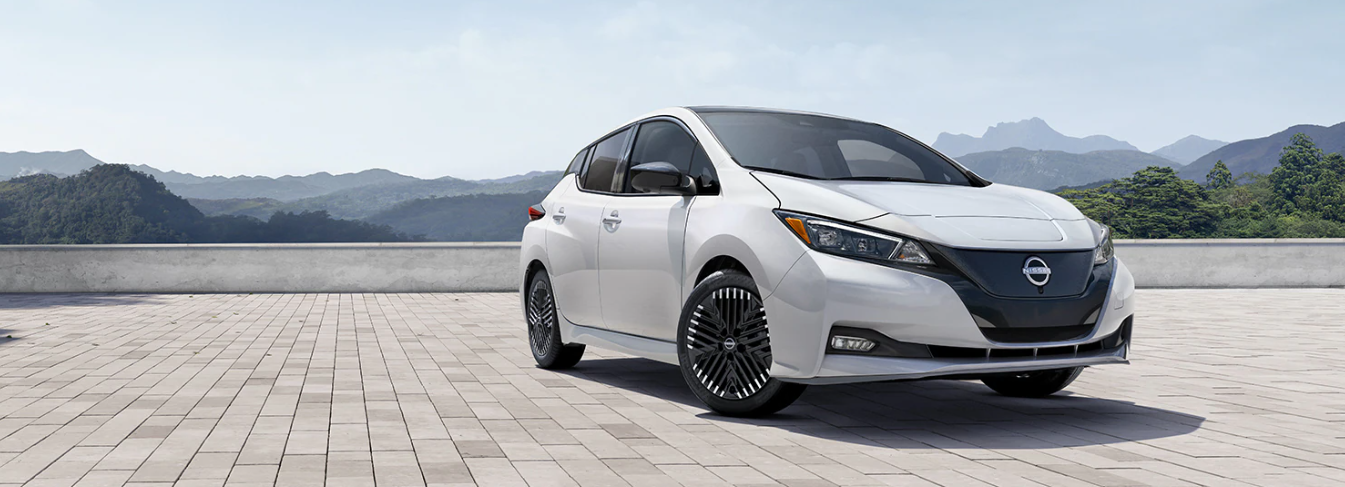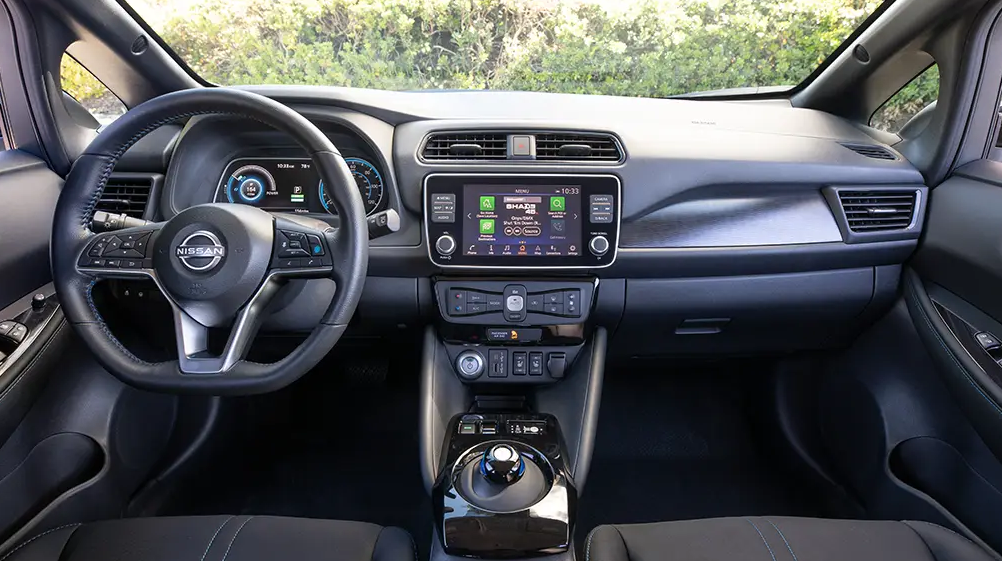In September of 2017, The second-generation Nissan Leaf received its much-needed revamp in the model year 2023 update that came out in April last year. In the next few months, the Leaf is scheduled to flip the page to be 2024’s model within the United States. This is what we are expecting of the 2020 Nissan Leaf. Keep in mind that the images and information included in this article relate to the model year currently in use and as new information comes out the information on this page will be updated.

2024 Nissan Leaf Design
We’re anticipating the 2024 Nissan Leaf to be a carryover model that doesn’t have any modifications to the design. As we mentioned at the beginning of the article, Nissan revised the Leaf’s appearance just recently, so it’s unlikely that they’ll invest another large sum to update the exterior panels. The subtle modifications Nissan introduced to the Leaf during the mid-cycle refresh included an updated grille with a closed design, but that isn’t a Chrome strip that is shaped like a V, brand new illumination of the Nissan Logo, new headlights with the new black finisher, as well as the more aerodynamic tires deflector the rear diffuser and a rear spoiler.
The most prominent exterior modification was the brand-new alloy wheels that measure 17 inches with five spokes. Inside, aside from a brand new video introducing the car as well as the brand new Nissan logo The Leaf received no modifications as part of the mid-life update and is expected to stay as it is now until the new model year.
Specifications
It is expected that the 2024 Nissan Leaf will likely come with 40 kWh and 60 kWh packs of batteries like the model that is currently in production. The standard-range version should feature a low-output motor that produces 147 horsepower and 236 lb.-ft. of torque. It is likely to support charging with up to 50 kW and provide an EPA-estimated. range of 149 miles.
The model with extended range is likely to come with a high-output motor that produces 250 lb.-ft. of torque. It is expected to allow charging with up to 100 kW and offer an EPA-estimated. distance of 212 miles.
Features
The 2024 Nissan Leaf could come in two trims as the previous version namely S plus SV Plus. There could be some small adjustments to the equipment of the carry-over trims. A touchscreen system for infotainment with 8 inches with automatic climate control 60/40 split rear seats and fast-charging, auto headlights Nissan Safety Shield 360, Rear Door Alert, and other features are expected to be included in the standard.
There is a reason why the SV Plus grade should have larger battery packs a stronger motor, and a greater output rapid charging port (100 kW). Furthermore, it’s likely to come with several other features that are better or more advanced including LED-lit headlights alloy wheels 17 inches, an 8-way electronically adjustable driver’s chair with two-way lumbar support, Nissan Door to Door Navigation as well as many more.
It’s superior in terms of security, also, thanks to ProPILOT Assist, a 360-degree camera system, steering assistance, and Intelligent Cruise Control that can hold and speed up along with Intelligent Driver Alertness. Both grades will likely feature cloth upholstery. The S grade could have gray finishes, while the SV Plus will probably feature black finishes for a more sophisticated style.
Range, Charging, and Battery Life
It is possible to charge the Leaf can be connected to a normal 120-volt outlet, and a higher voltage outlet however, the charging time varies drastically in both. With a 240-volt connection, Nissan claims that the battery in the standard Leaf as well as the bigger one that is included in Leaf Plus can be recharged in just seven hours. The DC fast-charging feature is standard for all models.
Its Leaf S comes with a 40.0-kWh battery, which provides the most limitless range of around 149 miles. It might be sufficient for drivers who have short commutes, but it’s not even half the range of model 3. Long Range model provides. Its SV Plus SV Plus provides 215 miles of driving range rated by the EPA because of its bigger battery capacity.
Fuel Economy and Real-World MPGe
The SV Plus test vehicle exceeded its EPA highway rating of 94 MPGe, producing 98 MPGe on the 75-mph highway fuel economy test route. We did however see an average of 180 miles in the test; EVs typically do not get more than their EPA ratings in the city. For more information on the Leaf’s fuel efficiency visit the website of the EPA.
Interior
The inside of the Leaf includes a significant amount of black plastic The well-assembled and consistent texture helps it look cheap. The gauge cluster is equipped with an analog speedometer that is alongside a 7.0-inch digital readout that is reprogrammable to display a variety of display options. The Leaf’s seats are La-ZBoy comfortable and the roomy rear seat provides ample space for adults as well.
Although the back seat does not make a flat floor when folded and folded, we found the capacity for cargo to be one of the highest within its category. We could fit seven carry-on luggages behind the back seat, and an impressive 19 when folding the seat back. In comparison, the Bolt EV could hold five people in its cargo space and topped out at 16 when its rear seats were tucked away. The Niro EV which has an SUV-like style held more cargo during our tests however the Leaf remains the best among electric vehicles.

Infotainment and Connectivity
All Leaf models have the identical 8.0-inch information display that includes Apple CarPlay and Android Auto integration. Navigation is available. The most recent Nissan Connect software interface, although not the most appealing to the eye, is nimble and responsive to inputs. Audiophiles might be disappointed by the standard audio system of the Leaf, which is a six-speaker system. A seven-speaker Bose system can be added however it didn’t impress us on our test drive, either.

2024 Nissan Leaf Price & Release Date
The official 2020 Nissan LEAF prices will start at $29,235 which includes destination in the S trim and $37,285 with destination for the SV Plus. For the entry-level model, the price is just an increase of $100 as compared with the LEAF’s current MSRP, which is $29,135. In 2024 Nissan Leaf is expected to be available in the summer. Due to its size and performance Due to its range and performance, due to its range and performance, the Nissan LEAF isn’t as competitive as it used to be. The most modern rivals in this class comprise models like the Tesla Model 3, Kia EV6, Hyundai Ioniq 5, Chevrolet Bolt EV, Kia Niro EV as well as Volkswagen ID.4.